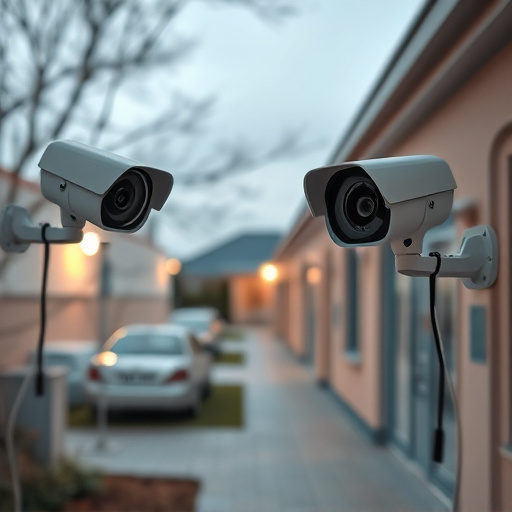Cameras in nursing homes enhance safety by monitoring activity, facilitating emergency responses, and enabling remote family check-ins. However, prioritizing privacy is essential through data protection laws, transparent communication, and resident control over recordings. Effective implementation involves strategic camera placement, secure networks, regular maintenance, clear policies, staff training, and compliance with regulations. Balancing surveillance with dignity, through ethical guidelines and transparency, fosters trust while harnessing technology's benefits for enhanced care in senior living facilities.
“Cameras for nursing homes are transforming elderly care, offering enhanced safety and peace of mind. This comprehensive guide explores the multifaceted benefits and privacy considerations of implementing camera systems in senior living facilities. From basic to advanced technologies, we delve into the various types available, providing insights on their capabilities and potential applications.
We also outline practical steps for successful implementation, best practices, and strategies to address common concerns related to ethical use and data privacy. Discover how cameras can improve care quality while ensuring resident dignity in today’s digital era.”
Understanding Cameras for Nursing Homes: Benefits and Privacy Considerations
Cameras for nursing homes offer a range of benefits for both residents and staff, enhancing safety and security while providing peace of mind. These devices can monitor activity in common areas, track resident movement, and serve as valuable tools during emergency situations, allowing swift response times. Additionally, they facilitate remote family check-ins, enabling loved ones to connect with their aging relatives from afar.
However, implementing cameras in nursing homes also raises important privacy considerations. It’s essential to ensure that the installation and use of these devices adhere to strict data protection regulations, respecting resident privacy. Clear communication about camera placement and purpose is crucial, and residents should have control over when they are recorded. Privacy-focused features like secure storage, access controls, and customizable settings can help strike a balance between safety and confidentiality in this sensitive environment.
Types of Senior Living Cameras: From Basic to Advanced Technology
In today’s digital era, senior living facilities are increasingly adopting technology to enhance care and safety, and cameras for nursing homes play a pivotal role in this transformation. Basic cameras offer live streaming and recording capabilities, allowing staff to monitor residents’ activities and well-being from anywhere at any time. These are typically installed in common areas, dining halls, and even in individual rooms to provide a sense of security and peace of mind for both residents and their families.
Advanced technology takes this a step further with the introduction of AI-powered cameras. These smart cameras can recognize familiar faces, detect unusual behavior, and alert staff in case of emergencies like falls or distress signals. They also facilitate remote monitoring by family members, fostering better communication and care. Moreover, advanced systems often integrate with other healthcare devices, creating a comprehensive digital ecosystem for senior living that improves safety, efficiency, and overall quality of life.
Implementing Camera Systems: Practical Steps and Best Practices
Implementing camera systems in senior living facilities, especially nursing homes, is a strategic move to enhance safety, security, and peace of mind for both residents and their families. When selecting and setting up cameras for nursing homes, it’s crucial to consider specific needs such as privacy, coverage areas, and data storage. Begin by assessing the facility’s layout and identifying potential risks or vulnerable areas. Determine the number of cameras required based on size and density of occupancy.
Best practices include ensuring compliance with privacy regulations, positioning cameras strategically for optimal visibility without invading residents’ personal space, and integrating a secure network to protect sensitive footage. Regular maintenance and testing are essential to keep the system functioning optimally. Additionally, providing clear policies and training for staff on camera usage and resident privacy rights is vital for ethical implementation of cameras in nursing homes.
Addressing Concerns and Ensuring Ethical Use in Elderly Care Facilities
In the context of cameras for nursing homes, addressing concerns about privacy and ethical use is paramount. Elderly residents and their families often have legitimate worries about surveillance in such intimate settings. However, these concerns can be mitigated through clear communication and robust policies that ensure transparency. Care facilities should educate both staff and residents about the purpose and scope of camera usage, emphasizing that data is handled securely and only accessed when necessary for care or safety purposes.
Implementing ethical guidelines for cameras in nursing homes involves striking a delicate balance between monitoring to ensure resident safety and maintaining dignity. This includes strict protocols on data access, regular reviews of camera placement, and anonymization techniques to protect personal information. By fostering an environment where trust is built through transparency, elderly care facilities can harness the benefits of technology while respecting the autonomy and privacy of their residents.
